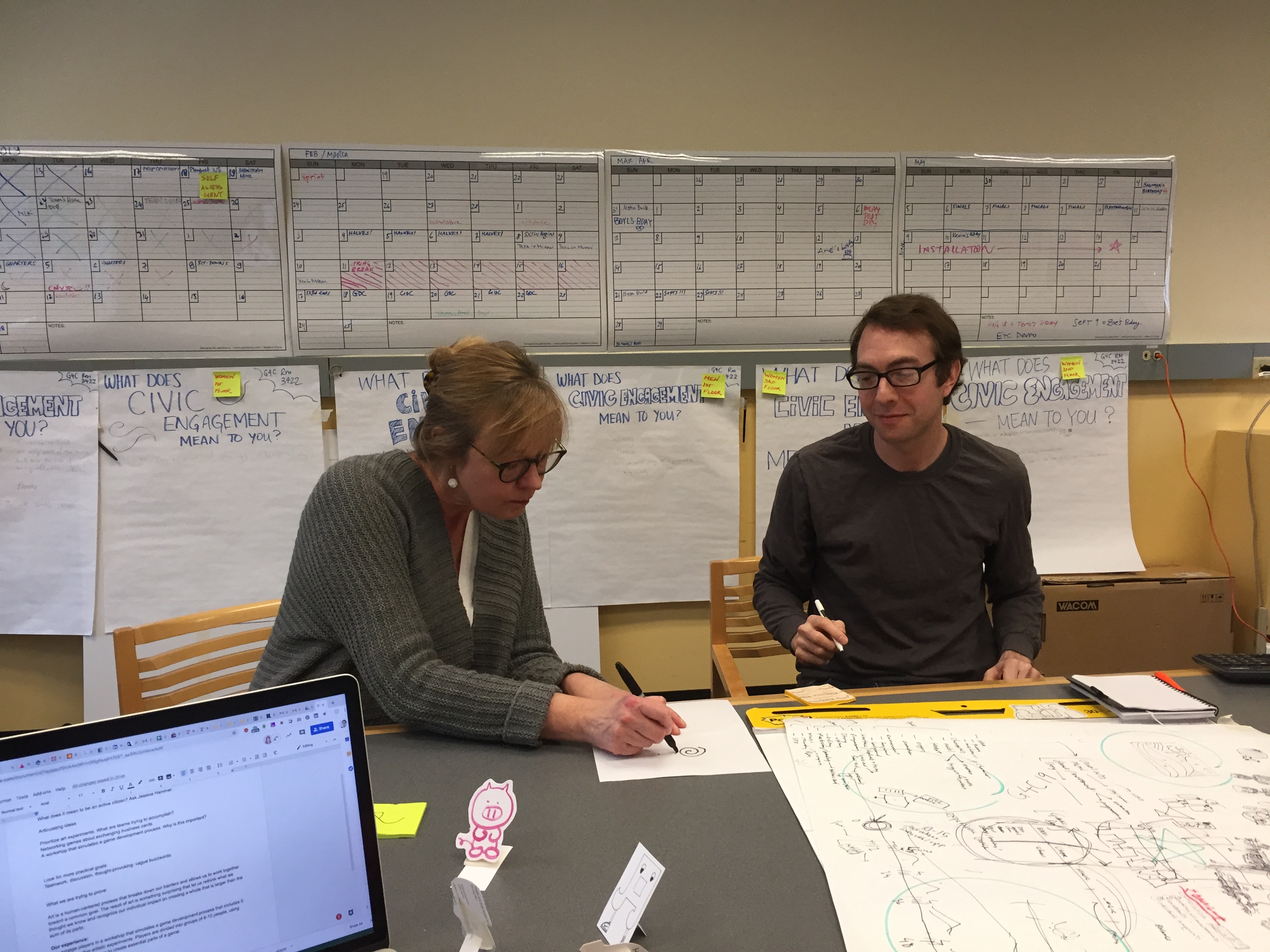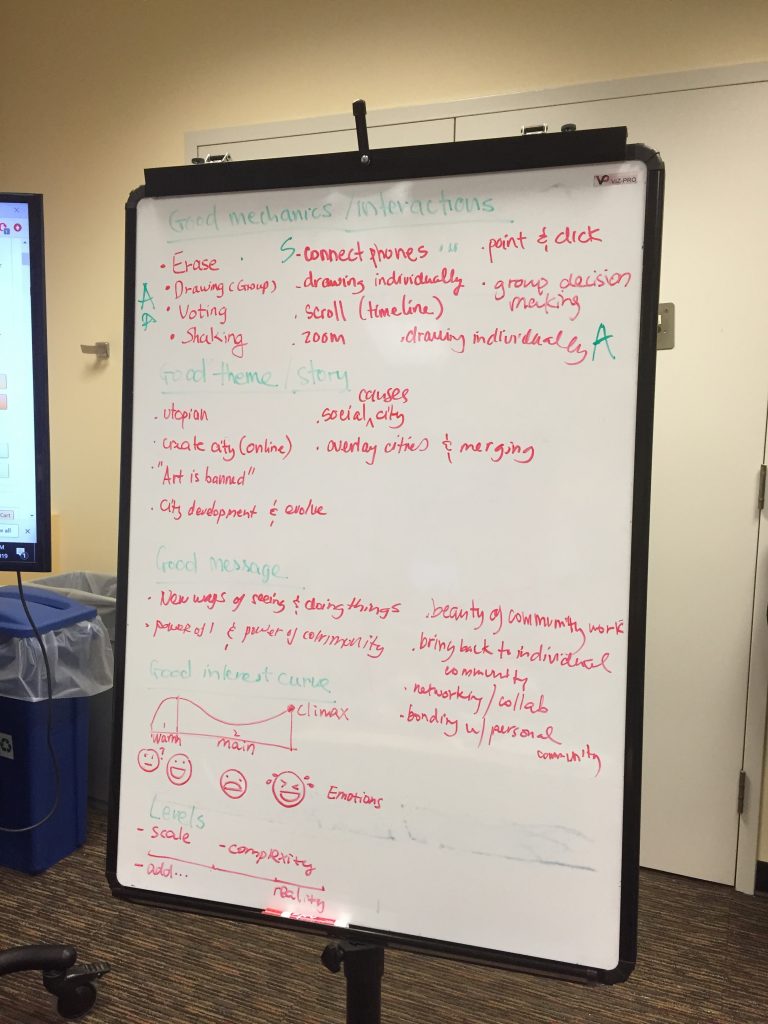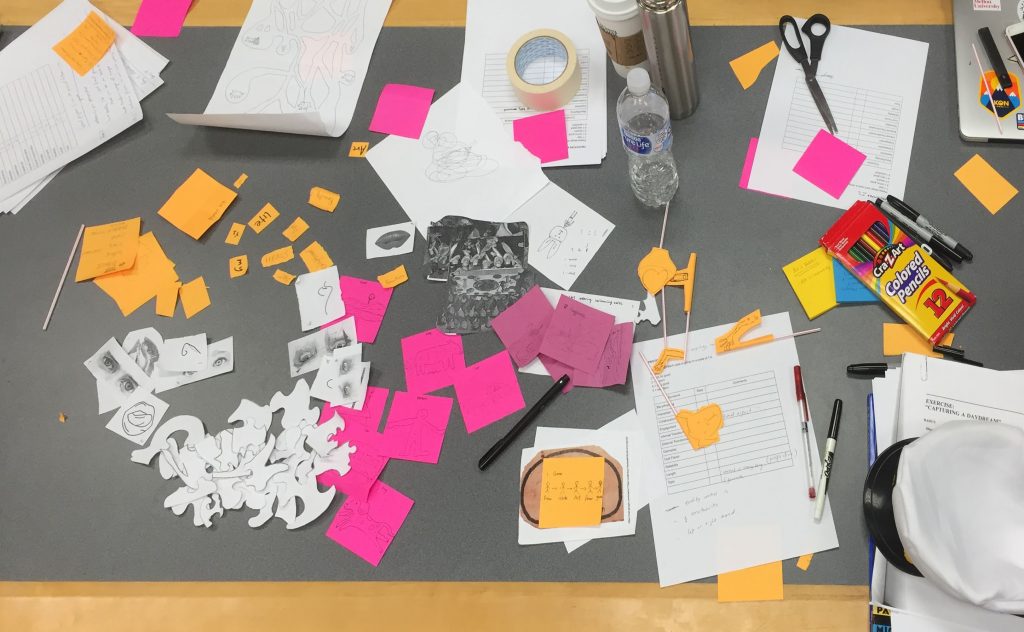Summary
| Goal: Have features for programmers to start prototyping. Challenge: Designers faced challenges figuring out our experience design. We could not agree on the vision and what to build. Did we fulfill this week’s goals: Yes! |
Process
The past month was all about saying “yes, and” to design ideas, synthesizing them together and to the Transformational Framework. We talked about possibilities but not enough of showing.

Agree to disagree – Finding the practicality of the project
As our designers explored multiple design directions and had a hard time seeing eye-to-eye on a singular vision, programmers were eager to start developing features.
As a producer on the project, my role was to optimize our work process, so our team could effectively deliver features, test, and make decisions on how to move forward. At this early phase, exploring engaging art technique regardless of whether or not they end up in our final design was key to understand the emotional and physical impact of different art activities on the players. Our focus at this phase should be on quantity and speed rather than quality.
I asked everyone to spend 2 days creating their own 5-7 paper prototypes (simple art games with paper and pen) for our team to play together. Our designers struggled with this request because they were afraid that the prototypes did not show enough depth or at the quality they desired. Was this true? Yes. Did this lack of quality matter to the project’s success right now? Not quite. The goal was to experience what mechanics are engaging and what not. We planned to find 2-3 features that designers could agree on so programmers could build and test quickly.
Brought organization to internal playtest
We started at 2pm and finished at 6:30pm with 20 prototypes in total. I laid down some rules prior to the playtest.

(1) Individually and silently evaluate each prototype. Questions can be asked but discussion will happen at the end of the playtest to not waste time caught up on talking.
(2) Each prototype has 15 minutes for playing and evaluating.

Zoe was in charge of leading the playtest. I brought her a sailor/ police hat so she could feel comfortable role-playing a person who asks critical questions on each prototype. Our session felt very much like an improv game.

The playtest started out awkwardly but everyone became more involved and excited afterwards because we got to experience our ideas for the first time. Our team agreed that this was one of the most productive meetings we had. We arrived at a few features we were interested in implementing with tech.
- Group drawing (holding the pen together) to navigate a maze.
- Draw roads, cars, human, and pet. Connect phones to layer these objects and build a virtual city.
- Erase mechanics to reveal a background / return to the past.
Utopia of social issues that reveal a shocking twist. - Staging propaganda “Art is banned by the government. Art is bullshit!”
Feature prioritization
We ranked these interactions in the order of importance. We had our features for week 6:
- Draw, paint, color picker
- Project individual drawing from mobile to the big screen
- Vote
- Erase
- Connect phones to create a larger moving system
Adjusted to the team’s needs
I learned from my teammates that too many meetings had slowly drained their energy. I agreed. I was not sure how to find the right experts when we weren’t sure who we were looking for. The most recent expert we were interested in was Stone Librande, who has been holding workshops for game designers for almost 20 years.
Stone touched on many points that resonate with us, which included our focus on fun co-op interactions and positive emotions. He also reminded us on the practical things when holding a workshop for a large crowd of people. Finally, he was willing to be our main point of contact throughout the semester. Fantastic! More details with Stone Librande can be found here.
